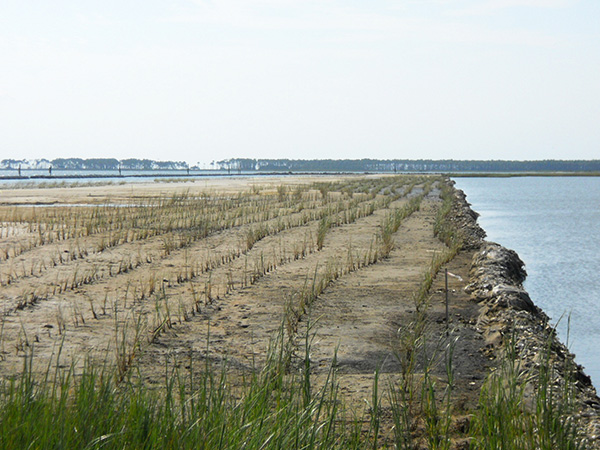GET provided soils explorations and geotechnical engineering studies for the Post Katrina Shellfish and Fish Nursery Recovery project for the Alabama Department of Conservation and Natural Resources (ADCNR). At the time of its construction, it was the largest shoreline restoration of its kind ever undertaken in coastal Alabama. The Little Bay Peninsula Restoration Project restored coastal marshes and created fish and shellfish habitats along publicly-owned shorelines damaged during Hurricane Katrina. The restoration project restored about 30 acres of salt marshes and helps to guard more than 5,000 acres in a conservation area managed by ADCNR as part of the Alabama Forever Wild Program.
The project included the construction of an approximate 5,000 foot long breakwater constructed between 100 feet and 500 feet from the existing shoreline. This breakwater provides dissipation of the wave energy and protects the shoreline from erosion. Approximately 130,000 cubic yards of sediment was placed between the existing shoreline and 200 feet offshore of the existing shoreline.
The geotechnical study for the project included performing soils explorations with GET’s barge–mounted drill rig at various locations along the proposed containment dike and breakwater to evaluate the strength and materials of the insitu soil conditions. Additional explorations for potential borrow sources were made in the areas of proposed offshore borrow sources for evaluating the suitability of sediments to be used in the filling behind the breakwater. Additional onshore sources of sediment were sampled and investigated for suitability for placement behind the proposed breakwater.
Laboratory testing was performed on the soils collected from the area of the proposed breakwater to provide grain size data and soil strength information for the design of the wave attenuator devices utilized in constructing the breakwater. Sediment from the various potential borrow areas were tested for suitability in the fill areas.
Engineering evaluations included performing settlement evaluations and bearing capacity analysis of the various types and sizes of breakwater device designs being evaluated by the project design team. GET assisted in the sizing of the wave attenuation devices and riprap.
South of Bayou La Batre, Alabama

